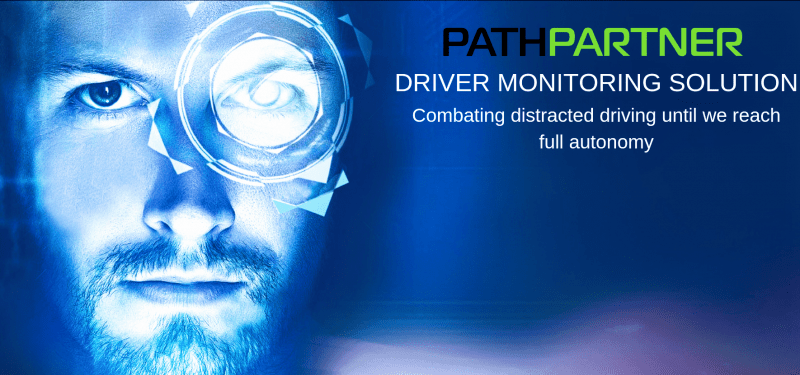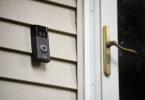[ad_1]

writer: Eric Walz
Because the world’s automakers develop extra automobiles that include level-2 or larger automated driving options that also require human supervision, there’s a rising demand within the auto business for in-cabin monitoring programs designed to keep watch over the driving force to verify they’re paying consideration and are able to take again management of an autonomous car if wanted.
One answer for the world’s automakers is so as to add a driver monitoring system (DMS) to their automobiles. With demand rising for these kind of occupant displays, a handful of corporations are actively engaged on such programs, together with PathPartner.
PathPartner is a specialised product engineering companies firm based in 2006. The corporate has a worldwide presence, with growth facilities in Bangalore and Cochin, India, Frankfurt, Germany and Silicon Valley.
Extra lately, PathPartner developed an occupant monitoring sensor (OMS) that makes use of 4D imaging radar expertise mixed with digital camera fusion. It is designed to complement a camera-based car occupancy monitoring system. Nonetheless, PathPartner’s DMS combines the strengths of each right into a single, low value unit for automakers.
“Combining each digital camera and radar affords vital enchancment in accuracy below low-light, noisy environments,” mentioned Vinay MK, Vice President of R&D of PathPartner. “Our digital camera sensor with near-infrared illumination allows dependable efficiency below completely different lighting circumstances.”
How Does 4D Imaging Radar Work?
4D imaging radar represents the subsequent era of radar expertise. It really works very very similar to the flash of a digital camera that momentarily illuminates the topic earlier than taking an image. Nonetheless, as an alternative of the utilizing mild from a digital camera flash, imaging radar makes use of pulses of radio wavelengths, in accordance with Anthony Freeman, Supervisor, Planetary Science Formulation at NASA Jet Propulsion Laboratory in Pasadena, CA.
In a standard digital camera, the sunshine from the flash is mirrored again by way of the digital camera lens to seize a scene in low mild circumstances. Whereas imaging radar makes use of an antenna and static random-access reminiscence (SRAM) reminiscence to file its photos. The radar solely captures the sunshine that was mirrored again in direction of the radar’s antenna.
This mirrored mild is collectively often known as a “level cloud” and every body reveals the dimension, form, location and motion of auto occupants. From these 4D radar photos, deep-learning algorithms can be utilized to find out what they’re.
When used as a part of a driver or passenger monitoring system, PathPartner’s 4D imaging radar expertise can be utilized to detect refined motion or perhaps a individual’s breath in a car’s inside, akin to a sleeping youngster below a blanket or the presence of pets.
Three Forms of Automotive Radar Methods
Automotive radar programs will be categorised based mostly on their vary. Brief-range radar for instance, can detect objects as much as 30 meters away from the car. Brief-range radar is normally positioned within the rear corners of a car to help blind spot detection, rear collision warnings, cross-traffic alert and for parking help.
Medium vary radar detects objects inside a 30-80 meter vary and long-range radar is for distances better than 80 meters. Lengthy-range radar is used for car security programs akin to Automated Emergency Braking (AEB) and ACC (Adaptive Cruise Management).
The third kind is millimeter-wave radar, which is the kind utilized in Pathparter’s DMS, It is used extra ceaselessly within the auto business resulting from its smaller wavelength, larger decision, accuracy and skill to differentiate between two objects. It is a well-liked alternative for automakers resulting from its small measurement and strong efficiency.

An summary of PathPartner’s occupant monitoring answer.
Automobile Occupant Monitoring utilizing Millimeter Wave Radar
FutureCar spoke extra in-depth with PathPartner’s Vice President of R&D Vinay MK, and he defined a bit extra concerning the firm’s underlying expertise utilized in its DMS. We additionally requested him to elucidate the principle variations between camera-based cabin displays and those who use 4D millimeter wave imaging radar.
“Digicam-based items can detect correct utilization of seat belts and stature of the occupants, each of that are vital inputs to airbag deployment. Digicam-based items can be utilized to observe the actions of the driving force like smoking, speaking on the telephone, consuming, ingesting, cellular texting, distraction, falling off asleep, out of the blue falling sick,” mentioned Vinay. “They’ll additionally detect the presence of sure sorts of objects like empty child seats, hanging coats, and many others.”
Vinay mentioned that 4D radar programs completely complement camera-based monitoring programs with occupancy detection below no-light circumstances. He mentioned that 60GHz radar programs have ample decision to detect the distinction between toddler and grownup respiratory charges. He additionally mentioned that combining each digital camera and radar knowledge affords vital enhancements in accuracy below low-light circumstances.
“Detection of infants in child seats, even when coated below blankets, is feasible solely by a 4D radar module,” mentioned Vinay. “Detection of presence in a parked automobile is likely one of the main causes for utilizing 4D radar in DMS.”
The Nationwide Security Council reported that on a median 39 youngsters below the age of 15 die annually from warmth stroke after being left in a car. Because of this, the Sizzling Automobiles Act was created by Congress in 2019 which requires the U.S. Division of Transportation (DOT) to mandate that every one new automobiles have a toddler presence detection system, akin to the kind of occupant monitoring system being developed by PathPartner.
To deal with processing calls for for automakers, PathPartner DMS has been ported on NextChip’s Apache4, which is a pre-processor for imaginative and prescient programs used for superior driver help programs (ADAS). The Apache-4 features a devoted sub-system of picture processing accelerators and optimized software program, which reduces compute necessities by as a lot as 70%, in accordance with Nextchip.
“The APACHE4 processor affords superior picture processing in a extremely built-in method, mentioned Vinay. “Its superior algorithms ship a extremely improved detection price versus typical vector-based classifiers, making it a extremely inexpensive DMS answer for Euro NCAP mass-market adoption.”
PathPartner attracted a lot consideration after main chipmaker Qualcomm Inc. selected to incorporate the corporate’s DMS in its idea automobile on show at CES 2019 in Las Vegas, which is likely one of the world’s greatest expertise occasions.
In January, PathPartner introduced the launch of its PT605 system on module (SOM) and good digital camera reference design equipment, which is predicated on Qualcomm’s QCS605 system on chip (SoC).
PathPartner’s DMS is designed round a number of small convolutional neural community (CNN) fashions mixed with adaptive machine studying modules. Attributable to this hybrid structure, the corporate’s imaging radar expertise can course of 60 frames per second from a digital camera feed with very low footprint utilizing DSPs provided by Qualcomm, the corporate says.
The mix of PathPartner’s high-performance system-on-module (SOM) and good digital camera reference design equipment mixed with the corporate’s machine engineering companies additionally allows machine makers to handle the rising demand for imaging radar outdoors of the auto business, together with for AI-enabled cameras and IoT units, the corporate mentioned.
“Our digital camera sensor with near-infrared illumination allows dependable efficiency below completely different lighting circumstances. The digital camera module and processing unit are hooked up by way of a high-end automotive-grade FAKRA connector, which affords set up flexibility and low type issue digital camera installations,” mentioned Vinay.
FAKRA (Fachkreis Automobil) is an business normal for automotive-grade connectors developed in Germany that may function as much as 6 GHz and are extremely dependable. All these connectors are sometimes used to attach wi-fi imaging and video units.
PathPartner’s DMS can also be supported on {hardware} provided by Silicon Valley software program firm Cadence, which makes merchandise appropriate for a lot of automotive purposes.
“Cadence is a high-performance DSP and convolutional neural community(CNN) accelerator supplier with design wins on automotive processors,” mentioned Vinay. “By porting our DMS algorithms and fashions on Cadence processors we’ve them able to check out for automotive OEMs.”
The Tensilica Imaginative and prescient DSP imaging merchandise from Cadence that PathPartner is utilizing for its DMS had been designed to run the complicated algorithms used for imaging and pc imaginative and prescient, together with object and face recognition and monitoring, low-light picture enhancement, digital zoom, and gesture recognition.
The Tensilica household additionally affords excellent efficiency for operating AI powered software program, which is another excuse it was chosen by PathPartner.
PathPartner’s strong DMS machine learning algorithms have additionally been showcased on Intel’s flagship Apollo Lake processor, in addition to on NXP’s IMX8x automotive-grade processor, the corporate mentioned.
“This unit is being deployed on vehicles and vans in Bangalore, India,” Vinay informed Automotive Information in an interview final yr. “We have had encouraging suggestions from one Tier 1 for with the ability to port compute-intensive algorithms on simply 1.2GHz quad-core processors.”

Till autonomous automobiles can safely function drive with out human intervention, which remains to be years away, corporations like PathPartner are creating interim options to verify the driving force is all the time paying consideration each time a car is working in autonomous mode, or {that a} youngster or pet is just not inadvertently left behind in a car.
Based on Market Insights, the long-term outlook signifies that demand for DMS will develop considerably within the auto business, particularly if laws are handed requiring them in all passenger automobiles, such because the case with driver and passenger airbags and backup cameras, which all passenger automobiles offered within the U.S. should come outfitted with.
Nonetheless, driver and occupant monitoring programs are usually not only for self-driving automobiles. Industrial fleet operators can enhance the protection of their fleets by monitoring drivers for alertness. The expertise will also be used for backseat occupant monitoring wants, to verify individuals or pets are usually not accidently left unattended in a sizzling car.
“Fleet prospects are undoubtedly preliminary adopters of our expertise. They’ve a well-defined return on funding and we offer very cost-effective options to fulfill their particular wants,” mentioned Vinay.
PathPartner additionally has a strategic partnership with a number one Tier-1 provider that is centered on the event of superior imaginative and prescient programs within the mobility area. Pathparter declined to call the corporate at this stage. Nonetheless, Vinay confirmed that the 2 corporations are collectively creating a digital camera & radar-based occupancy monitoring & driver monitoring ECU to help the processing necessities of the system.
“We proceed to work with massive Tier-1s and we are going to disclose their names at an acceptable time,” mentioned Vinay.
PathPartner’s strategic accomplice will combine its occupant monitoring programs (OMS) and DMS algorithms on an automotive-grade ECU.
Utilizing Edge Computing As an alternative of the Cloud for Operating AI Purposes
PathPartner can also be utilizing edge computing for its occupant sensors as an alternative of sending knowledge to the cloud for processing, which will increase latency. For the automotive business, this method can provide the next degree of safety and lessens the reliance on mobile networks to transmit knowledge, which isn’t all the time dependable sufficient for safety-critical automotive programs.
“Shifting AI workloads from the cloud to units is rising by way of the roof as a result of rising issues round knowledge privateness, communication latencies and unreliable connectivity,” defined Ramkishor Korada, Co-Founder, and VP of Advertising, Enterprise Dev and Gross sales at PathPartner. “System makers are adopting this modification and bringing next-wave of innovation in good IoT units akin to these for video surveillance, dashboard cameras, drones, video conferencing, and so forth,” he mentioned.
We requested Vinay about among the challenges of integrating a DMS with an present car’s ADAS, since a driver monitoring system requires a sure degree of integration with the remainder of a car’s controls, together with braking and steering programs, in addition to AI-powered notion programs, that are designed interpret a driver’s actions.
“We lately accomplished a cloud-based AI challenge for a fleet administration firm based mostly out of North America,” defined Vinay. “A driver wanting extraordinarily left could be thought of distracted. Nonetheless when that is adopted by a U-turn we all know it is not a distraction. Equally, 76% of the cruel braking occasions had been simply round visitors lights. These occasions have to be contextualized and categorised utilizing AI-enabled software program.”
Along with creating an in-cabin occupant monitor, PathPartner gives superior software program integration, validation & testing companies to all main automotive Tier 1s. The corporate lately had a start-of-production design win with a significant European Tier-1 for in-cabin occupancy detection.
Vinay predicts that the preliminary emphasis within the auto business will likely be on the low-cost built-in DMS, which may deal with many of the diverse circumstances. So it is a bit of a commerce off with efficiency vs. value for automakers. He additionally predicts that the primary driver monitoring programs (DMS) deployed at scale could not even help eye-gaze detection resulting from prices.
“The main focus goes to be on value impression to the general roll-out of DMS slated for 2023.” mentioned Vinay. “Begin-ups like us who’re specializing in very superior options and complicated fashions may even need to plan for a protracted gestation interval.”
[ad_2]
Source link







